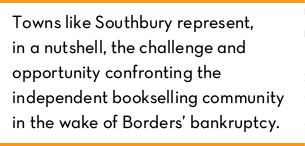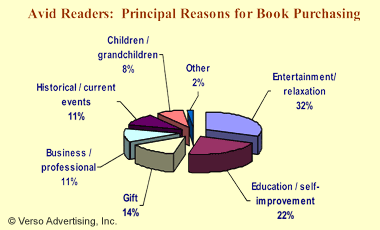The financial collapse of 2008 did this one good deed: it killed the dancing cowboy mortgage ads. The dancing cowboys and their variations seemed to rule the internet in the years before 2008. Their endless loops of rotating .gifs were infuriatingly impossible to avoid, running mercilessly, irrelevantly adjacent to whatever you were trying to read, watch or look at. The makers of the ads couldn’t care less whether they ran on a site devoted to politics, motherhood, or game development. After all, who didn’t need an enormous time-bomb of an adjustable rate mortgage on a house they couldn’t otherwise afford?
There are certainly brands that use blind mass reach effectively. High-volume low-cost reach makes sense for a company like Coca Cola, for example, that not only truly appeals across all demographics and interest levels but also has the budget to market accordingly. Book advertising, however, is a radically different kind of product with a radically different budget. Whether a reader is a fan of Daniel Silva’s thrillers or Suze Orman’s guides to personal finance and empowerment, the decision to buy a book is highly personal and nuanced. Often the greatest indicator of what you want to read next is what you have just read. And that is why we believe in context first marketing.
Context first means serving an ad for a book next to the most relevant news, blog or entertainment content. It means creating an ad for a parenting book within the Parenting magazine iPad app that provides the user with new insights into parenting. Dancing cowboys might get your visual attention, but they work to distract you from what you came to the site looking for in the first place. Context first advertising gives you information relevant to the site you’re on and provides an opportunity to go farther. Our job is not to stop readers from finding what they want, it’s to help them find more of what they want.
This is not a new philosophy for Verso Advertising. It has governed our media planning and creative development from the day we opened our doors. What’s a book ad in the NYTBR, after all, other than a contextually relevant ad? But while the philosophy isn’t new, the toolkit is. Digitals products are creating proliferating opportunities for contextual marketing—from Verso’s own Reader Channels to integrated sponsored content on mobile apps to rich media opportunities on every device.
One of these new opportunities is a venture that connects social media, engagement advertising, and contextual relevance in interesting and affordable ways: Say Media. Rich media used to be beyond the budgets of many of our publishing clients. Between ad construction and serving, it simply cost too much—even though the content offering and engagement benefits were clear. Say Media, however, builds rich media creative development, social linkage, and premium ad serving into every campaign budget—making campaigns affordable for medium- to high-profile book publishing projects. While some rich media such as full-page takeovers can be intrusive and disruptive to user experience, Say Media ads respect users first: an in-ad countdown banner indicates that the cursor is hovering and about to expand the ad window, and helps users avoid accidental clicks. They sell on a CPE (cost per engagement) model, so they have a material interest in serving the ad only to the most interested audience. If your project has interesting peripheral content available—a quiz, a game, a video, a slideshow of photos—an ad with Say Media can show interested readers the way to your book.

 Towns like Southbury represent, in a nutshell, the challenge and opportunity confronting the independent bookselling community in the wake of Borders’ bankruptcy. Suddenly there will be hundreds of sustainable, niche markets with no bookstore presence—a dramatic “supply gap” of physical bookstores of a scale that has not existed for forty years. A tectonic shift of the bricks-and-mortar retail landscape is upon us, whether we are ready for it or not. Not since the explosion of the mall stores in the 1970s, the chain superstores and big-box retail in the late 1980s, and the disruptive emergence of Amazon in the late 1990s, have we seen change of this magnitude and speed. Independent bookstores are about to face a critical test in the next couple of years, and how they respond to this emerging supply gap will determine not only their long-term future, but possibly the fate of the printed book as well.
Towns like Southbury represent, in a nutshell, the challenge and opportunity confronting the independent bookselling community in the wake of Borders’ bankruptcy. Suddenly there will be hundreds of sustainable, niche markets with no bookstore presence—a dramatic “supply gap” of physical bookstores of a scale that has not existed for forty years. A tectonic shift of the bricks-and-mortar retail landscape is upon us, whether we are ready for it or not. Not since the explosion of the mall stores in the 1970s, the chain superstores and big-box retail in the late 1980s, and the disruptive emergence of Amazon in the late 1990s, have we seen change of this magnitude and speed. Independent bookstores are about to face a critical test in the next couple of years, and how they respond to this emerging supply gap will determine not only their long-term future, but possibly the fate of the printed book as well.

